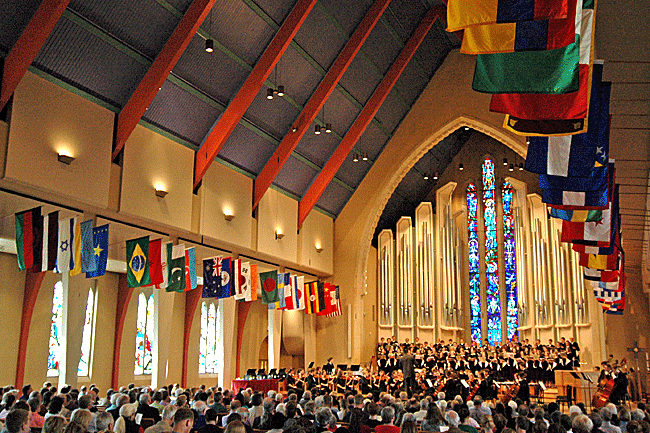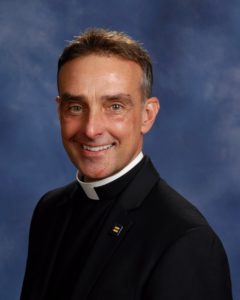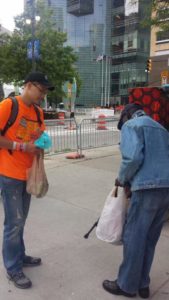Tuhina Rasche, San Carlos, CA
Warm-up Question
In an age filled with distractions and doubts, what does it mean to truly “see” one another?
How Do You “See”?
I’m not going to lie; I probably spend way much more time on my phone than I should. If I want to check the weather, there’s the weather app. If I want to know directions to travel from point A to point B, there’s the map app. I even have my Bible app and Lutheran Confessions app if I need to look up something theological at a moment’s notice. I have instant access to the world through the information that resides in my smart phone.
The instant gratification of having access to people and information has increased drastically since I was younger. It was only 15 years ago that I had to wait a long time for pages on the Internet to load, or for someone to pick up the phone and talk to them, ort to get a ride to the bookstore to pick up a book, or for the day of the week and time when my favorite television show would be aired. How we engage the world has drastically changed over a time. With that comes growing pains and learning how to live in a new way. Sometimes seeing the world in a new way leads to bumps and bruises. For example, I missed a sidewalk curb because I was texting and walking. This is just one of many dangerous scenarios which occur when people pay to much attention to their phone screens.
That misstep led me to remember an article about multiple (and even dangerous) scenarios that occurred when people paid too much attention to their phone screens and not enough to the immediate physical world around them. We can easily look at information, but fail to “see” the world around us.
There’s tension between our online and fleshy lives. We are embodied people, created in God’s holy image. We are also called to be in Christian community, to be the resurrected body of Christ. Social media and online spaces are connecting Christian community in new and exciting ways (like interacting with Faith Lens). Part of my life is lived out digitally; this is where I feel the deepest theological connection to a community that represents the resurrected Christ. My church meets every Thursday night on Twitter for #SlateSpeak to engage in deep and meaningful theological conversations. I may not get to see this community face-to-face on a weekly basis, but I get to “see” their passion for Christ.
community in new and exciting ways (like interacting with Faith Lens). Part of my life is lived out digitally; this is where I feel the deepest theological connection to a community that represents the resurrected Christ. My church meets every Thursday night on Twitter for #SlateSpeak to engage in deep and meaningful theological conversations. I may not get to see this community face-to-face on a weekly basis, but I get to “see” their passion for Christ.
I value the connections I’ve made over social media, but at the same time, I wonder how to reconnect and engage with the world which lies beyond the screen of my phone. I am experiencing the tension of seeing the world in new and different ways, but at the same time, I wonder if I truly “see” my neighbor in the midst of additional noise and distractions. Do I see the beauty of the image of God in my neighbor in online and in embodied spaces? Do I deeply engage with the communities of faith in which I participate, or do I see things at a surface level, unsure of asking hard questions, and taking the risk to see my interactions within God’s community in new and challenging ways?
Discussion Questions
- If you have a smart phone, how much time do you spend on it? Do you think it helps you stay connected with the communities in which you participate? Does it keep you from participating in communities that meet “in the flesh”?
- With the multitude of information that comes through social media, are you able to see how you engage with your friends and neighbors in online spaces? With your connections in both social media and in the flesh, are these meaningful connections happening in community? How are these interactions meaningful?
- What are some of the ways you can see the world in new ways and stay engaged in life between the embodied existence of being “in the flesh” community and meaningful connections and communities in online spaces?
Fourth Sunday of Lent
(Text links are to Oremus Bible Browser. Oremus Bible Browser is not affiliated with or supported by the Evangelical Lutheran Church in America. You can find the calendar of readings for Year B at Lectionary Readings
For lectionary humor and insight, check the weekly comic Agnus Day.
Gospel Reflection
Today’s lengthy Gospel lesson contains multiple binaries. The obvious binaries include light and darkness, and blindness and sight. There are also deeper binaries of belief and unbelief, and sin and redemption. It is also important to recognize that while simple choices are presented to us in today’s Gospel lesson, the world is far more complicated than living in an “either/ or” situation. This is where the gift of our “both/ and” Lutheran theology helps us deal with the complexities presented to us, not just in John’s Gospel, but also in the world around us. Today’s Gospel is also further complicated when talking about the dominant narrative of ableism; Jesus does not use the term “blind man” to describe the person he encounters, but emphasizes his humanity, referring to him as “the man born blind.”
What is fascinating about this particular sign and wonder is that it comes from an unexpected place: a paste made of Jesus’ spit and mud (cue, “Oh, that is so gross”), then followed by washing in the waters of Siloam. Just as our sacramental identity in Christ comes to us in the simple elements of bread, wine, and water, so this healing salve is not made of extraordinary elements we encounter everyday but rarely take the time to ponder as part of God’s fantastic creation. Our underwhelming sacraments give us a tactile experience of our overwhelming God. An underwhelming peasant man from Galilee is the overwhelming presence of God taking on our flesh.
How do we encounter the extraordinary that is found in ordinary daily elements? This is where John’s Gospel works with the concept of sight. We begin the lesson with a man who could not physically see, yet it ends with the Pharisees who could see neither the healing of the blind man nor the true identity of Jesus. The man born blind had immense faith and saw Jesus as the Son of Man (v. 38), the Pharisees could not “see” the healing that came from an ordinary peasant from ordinary elements. Must a sign use extraordinary elements in order to be believed?
The Gospel message compels us to see the entirety of our siblings in Christ and to see that they are created in the holy image of God. As our extraordinary God meets us in the ordinary, there is a sense of wonder in that meeting. When we are in community and make the effort to be truly present, we not only learn from our community, but see God’s created world past the duality of binaries. We can “see” and respond in love to the petition of the Lord’s Prayer, “thy kingdom come, thy will be done, on Earth as it is in heaven.” May we approach this Gospel and our neighbor with such a sense of wonder that our eyes are fully opened and made fully present to the gift of diversity found within Christian community.
Discussion Questions
- God constantly comes to us and shows up in the most unexpected of places. This is seen in the person of Christ and also how we experience Christ in the sacraments of communion and baptism. There are so many other places to experience God in community. Has God shown up for you in a place and time where you weren’t expecting? Where do you experience interacting with God within your community of faith? Do those places sometimes surprise you? Why?
- The Pharisees approached the man once born blind without actually seeing that he was healed. They had doubts to his identity, and their doubts led them to drive the man out of his community. Have there been times where you’ve had doubts in your faith journey? Have you had the opportunity to honestly talk about those doubts with people you trust? Do you feel encouraged to talk about your doubts in your life of faith? Why or why not?
Activity Suggestions
- We experience God in tactile ways, and sometimes in messy encounters. What does your faith look like if you were to describe it in a picture? What would that faith look like if you were to actually create that picture? In using the ordinary elements from this week’s Scripture lessons (oil, water, and dirt—preferably potting soil), create a portrait of your faith. Because oil and water repel one another, what was it like to create a faith portrait from these elements?
- What would it look like to create a space of blessing and healing for yourself and for others? This is an opportunity to do a simple activity with a profound effect. Stand in a circle, and with a small container of anointing oil or water from the baptismal font, make a sign of a cross on the forehead of the person next to you and state, “[Name], you have been sealed by the Holy Spirit and marked with the cross of Christ forever.” Make sure everyone has the opportunity to give and receive this blessing. Once you have anointed one another, talk about the experience within community of what it meant to bless one another.
Closing Prayer
Merciful God who created us in the diversity of your holy image, we pray that we may experience the world through your vision. We pray to see your holy image in every living being we encounter. We pray that if there is something impeding how we encounter your grace and mercy in the world, that it may fall away. Help us to understand that there multiple ways to encounter the fullness of your love in the world, and it is in that fullness we continue to profess your grace and love. Amen.




 Opening worship will be held at
Opening worship will be held at 


 Myths are truth and wisdom
Myths are truth and wisdom



